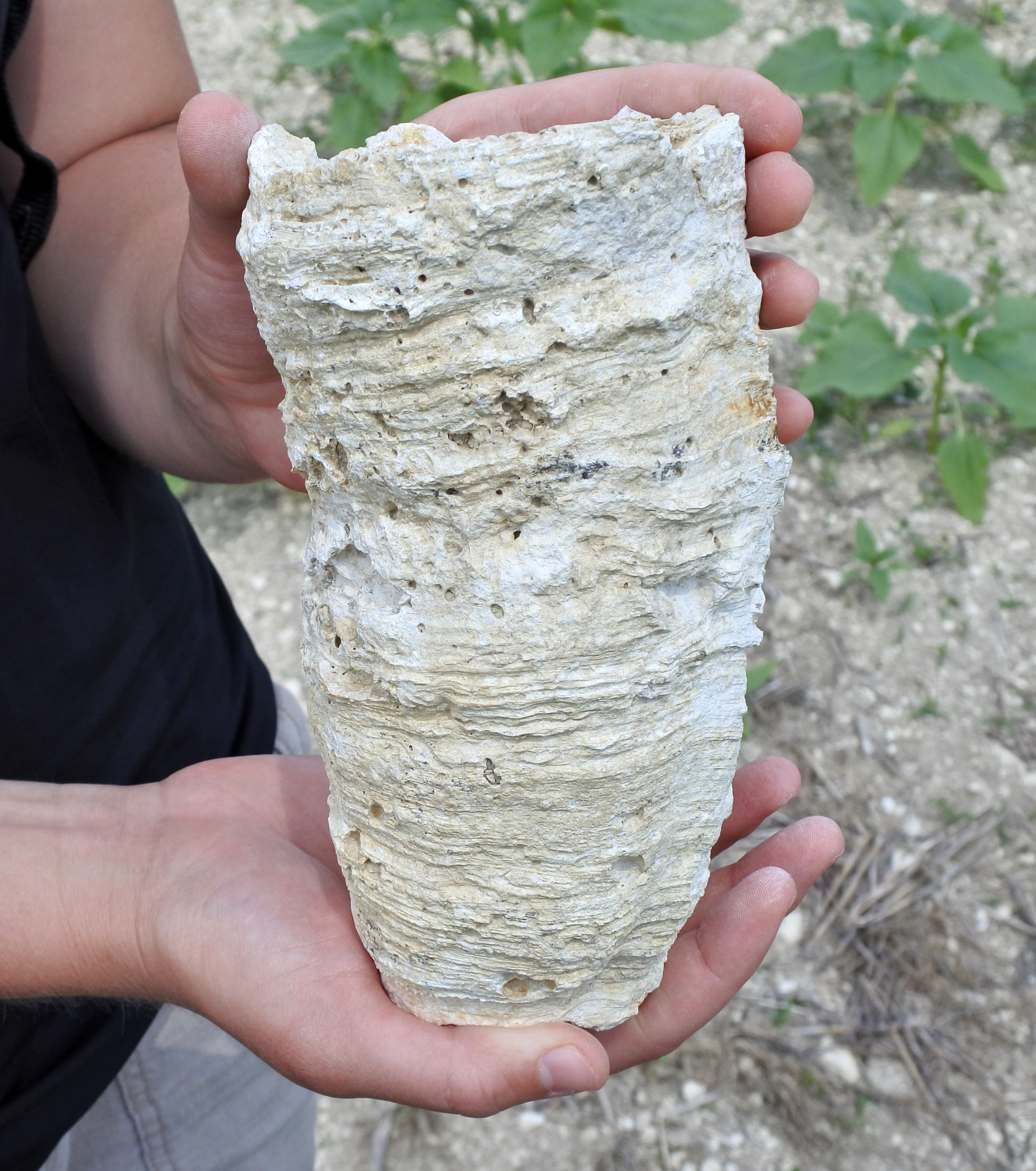|
Titanosarcolites
''Titanosarcolites'' is a genus of giant rudist bivalve from the Cretaceous. Its fossils have been found in Jamaica, Southeastern Mexico and the Southern US. It belonged to the now extinct family known as Caprinidae Caprinidae is a family of rudists, a group of unusual extinct saltwater clams, marine heterodont bivalves Bivalvia (), in previous centuries referred to as the Lamellibranchiata and Pelecypoda, is a class of marine and freshwater mollus ..., a group that went extinct during the KT extinction event, 66 MYA. ''Titanosarcolites'' was one of the last members of this group. There were several species, including ''T. alatus'', ''T. giganteus'', ''T. macgillavryi'' and ''T. oddsensis''. Description ''Titanosarcolites'' was rather large, perhaps being 2 meters in overall size at its largest. References Cretaceous bivalves Hippuritida {{Paleo-bivalve-stub ... [...More Info...] [...Related Items...] OR: [Wikipedia] [Google] [Baidu] |
Caprinidae
Caprinidae is a family of rudists, a group of unusual extinct saltwater clams, marine heterodont bivalves Bivalvia (), in previous centuries referred to as the Lamellibranchiata and Pelecypoda, is a class of marine and freshwater molluscs that have laterally compressed bodies enclosed by a shell consisting of two hinged parts. As a group, bival ... in the order Hippuritida. These stationary intermediate-level epifaunal suspension feeders lived in the Cretaceous period, from 140.2 to 66.043 Ma. The rudists became extinct at the end of the Cretaceous, apparently as a result of the Cretaceous–Paleogene extinction event. Fossils of this genus have been found in the sediments of Europe, China, Cuba, Egypt, Guatemala, Jamaica, Japan, Mexico, Oman, the Philippines, Turkey, Russia, the United States and Venezuela. Genera * †'' Antillocaprina'' * †'' Caprina'' * †'' Caprinula'' * †'' Caprinuloidea'' * †'' Coalcomana'' * †'' Conchemipora'' * †'' Guzzyella'' * � ... [...More Info...] [...Related Items...] OR: [Wikipedia] [Google] [Baidu] |
Campanian
The Campanian is the fifth of six ages of the Late Cretaceous Epoch on the geologic timescale of the International Commission on Stratigraphy (ICS). In chronostratigraphy, it is the fifth of six stages in the Upper Cretaceous Series. Campanian spans the time from 83.6 (± 0.2) to 72.1 (± 0.2) million years ago. It is preceded by the Santonian and it is followed by the Maastrichtian. The Campanian was an age when a worldwide sea level rise covered many coastal areas. The morphology of some of these areas has been preserved: it is an unconformity beneath a cover of marine sedimentary rocks. Etymology The Campanian was introduced in scientific literature by Henri Coquand in 1857. It is named after the French village of Champagne in the department of Charente-Maritime. The original type locality was a series of outcrop near the village of Aubeterre-sur-Dronne in the same region. Definition The base of the Campanian Stage is defined as a place in the stratigraphic col ... [...More Info...] [...Related Items...] OR: [Wikipedia] [Google] [Baidu] |
Maastrichtian
The Maastrichtian () is, in the ICS geologic timescale, the latest age (uppermost stage) of the Late Cretaceous Epoch or Upper Cretaceous Series, the Cretaceous Period or System, and of the Mesozoic Era or Erathem. It spanned the interval from . The Maastrichtian was preceded by the Campanian and succeeded by the Danian (part of the Paleogene and Paleocene). The Cretaceous–Paleogene extinction event (formerly known as the Cretaceous–Tertiary extinction event) occurred at the end of this age. In this mass extinction, many commonly recognized groups such as non-avian dinosaurs, plesiosaurs and mosasaurs, as well as many other lesser-known groups, died out. The cause of the extinction is most commonly linked to an asteroid about wide colliding with Earth, ending the Cretaceous. Stratigraphic definitions Definition The Maastrichtian was introduced into scientific literature by Belgian geologist André Hubert Dumont in 1849, after studying rock strata of the ... [...More Info...] [...Related Items...] OR: [Wikipedia] [Google] [Baidu] |
Rudist
Rudists are a group of extinct box-, tube- or ring-shaped marine heterodont bivalves belonging to the order Hippuritida that arose during the Late Jurassic and became so diverse during the Cretaceous that they were major reef-building organisms in the Tethys Ocean, until their complete extinction at the close of the Cretaceous. Shell description The Late Jurassic forms were elongate, with both valves being similarly shaped, often pipe or stake-shaped, while the reef-building forms of the Cretaceous had one valve that became a flat lid, with the other valve becoming an inverted spike-like cone. The size of these conical forms ranged widely from just a few centimeters to well over a meter in length. Their "classic" morphology consisted of a lower, roughly conical valve that was attached to the seafloor or to neighboring rudists, and a smaller upper valve that served as a kind of lid for the organism. The small upper valve could take a variety of interesting forms, including: a s ... [...More Info...] [...Related Items...] OR: [Wikipedia] [Google] [Baidu] |
Cretaceous Bivalves
The Cretaceous ( ) is a geological period that lasted from about 145 to 66 million years ago (Mya). It is the third and final period of the Mesozoic Era, as well as the longest. At around 79 million years, it is the longest geological period of the entire Phanerozoic. The name is derived from the Latin ''creta'', "chalk", which is abundant in the latter half of the period. It is usually abbreviated K, for its German translation ''Kreide''. The Cretaceous was a period with a relatively warm climate, resulting in high eustatic sea levels that created numerous shallow inland seas. These oceans and seas were populated with now-extinct marine reptiles, ammonites, and rudists, while dinosaurs continued to dominate on land. The world was ice free, and forests extended to the poles. During this time, new groups of mammals and birds appeared. During the Early Cretaceous, flowering plants appeared and began to rapidly diversify, becoming the dominant group of plants across the Earth by the ... [...More Info...] [...Related Items...] OR: [Wikipedia] [Google] [Baidu] |


